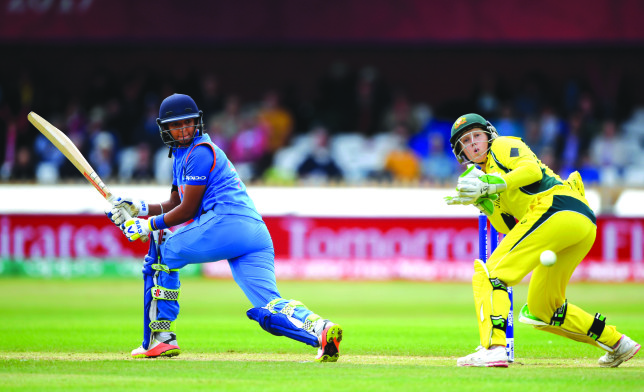
As India and England fight it out for the Women’s Cricket World Cup final on Sunday, now is a good time to look at the impact the tournament has had on the women’s game. Even though it is a World Cup, the reach and viewership it achieves is critical for the health of the sport and this time, there is cause for celebration.
Over the years, the idea of improving the profile of women’s cricket has received enough lip service. Everyone involved, including the viewing public, has good intentions when it comes to women’s cricket but very rarely has there been any concrete evidence of support from those who follow the game.
This time, we have proof with the International Cricket Council releasing some impressive numbers regarding this year’s World Cup.
For starters, more than 26,000 tickets were sold for the final at Lord’s, which will make it the biggest crowd ever to attend a women’s World Cup match. All matches in the tournament were shown live for the first time ever; though it is incredible that it has taken until 2017 for this to happen.
And then we come to TV viewership. According to the ICC, at this year’s tournament “80 per cent higher global viewership is expected across the course of the event compared to the 2013 edition with a global TV audience reach of more than 50 million. (There has been a) 51 per cent increase in the UK TV audience (compared to 2013 edition), 47 per cent increase in Indian TV audience and 300 per cent increase in Australian TV audience”.
The #WWC17 Final is set to be a sell out at @HomeOfCricket!
— ICC (@ICC) July 22, 2017
Who do you think will win?https://t.co/SY7lt3osQo pic.twitter.com/scGJisWoj9
The rise in TV audience in India is impressive as the 2013 event was held in the country. The ICC also revealed that “in South Africa, the increase in viewership in comparison to the 2013 event after the first five broadcast matches was 259 per cent”.
The base for those stats is smaller than that for the men’s game, which is understandable. But the all-round growth in viewership and the coverage that the tournament has received across platforms is more the laudable because we now have sustained engagement from the most important component of the jigsaw – the end user.
This year’s women’s Big Bash League in Australia attracted an aggregate crowd of more than 100,000. Every match of the Big Bash was streamed live, and for free, for the first time. The numbers from Down Under point to a healthy appetite for the women’s game which is as important as support from national boards. No longer is women’s cricket forced to make do with a vague sentiment of support.
Results are the greater efforts put in by @ICC to highlight women's cricket. Exceptional coverage and following #WWC17 https://t.co/h2C1d6da3B
— Anjum Chopra (@chopraanjum) July 22, 2017
Does this mean all issues surrounding women’s cricket, be it pay parity or support from the boards, have been resolved? No. But now, the game has a tangible base from where it can demand a greater share of the pie for the efforts of its players.
Countries like Australia and England have taken the lead when it comes to providing financial security to its female players. India was the last major nation to announce central contracts for its women’s cricketers – they did so in 2015. The highest-paid England and Australian women’s cricketers get around $65,000 (Dh230,000) as a retainer, which is nearly three times what the Indians earn. Also, there is no clarity on the future contracts of Indian women’s cricketers. So issues remain, especially when it comes to a reduction in the yawning gap between the salaries of men’s and women’s players.
Even so, women’s cricket as a whole is moving at a decent pace and in the right direction. And credit must go to the average cricket fan who has invested a valuable commodity – time.